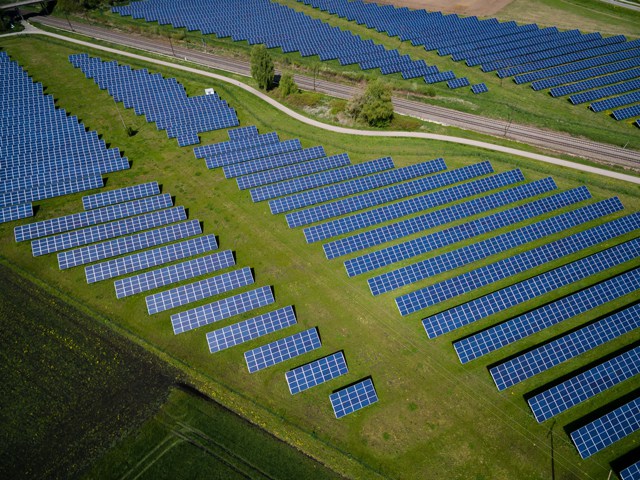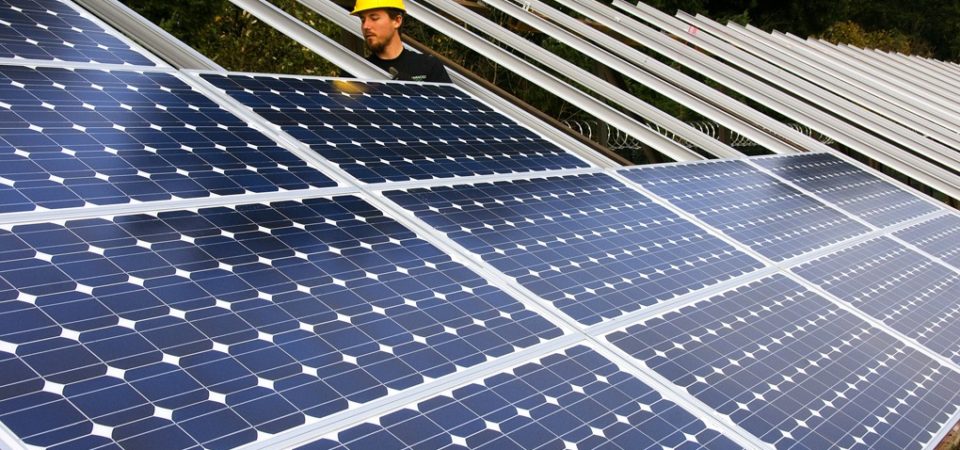This article was originally published by Planet Experts. It can be found here.
More articles from Planet Experts can be found through their RSS feed.
The global energy economy is rapidly transitioning to sustainable energy [sources] and those that stand still will soon be left behind.
Too much information about the cost of transitioning to a renewable energy [source] economy is bunk. Most of these premeditated lies crafted to sway public opinion revolve around jobs and cost. It brings back images of tobacco executives swearing before Congress that smoking is not addictive.
To the detriment of representative government, the Republican Party has taken this position as part of the new conservative mantra. Twenty-first-century conservatism no longer stands for efficient government. It is now a platform for fossil fuel fascism and oligarchy. (Please look up these terms. We’ve had enough of the pot calling the kettle black.)
The GOP claims the problem is the government. They fail to acknowledge that by controlling the House, Senate and White House — THEY are the government.
Obama’s war on coal is killing American jobs, making us more energy dependent on our enemies & creating a great business disadvantage.
— Donald J. Trump (@realDonaldTrump) June 3, 2014
Here is one small example: President Trump tweets the cheeky falsehood that bringing back coal will bring back coal jobs, create hundreds of thousands of new jobs and boost the entire economy. Automation, growing liability and a shrinking market killed coal jobs — not the renewable energy sector or Obama administration.
Politicians working for the oil cartel deny anthropogenic climate change and argue that producing more oil will create a more sustainable energy future. This is hypocrisy and proof of their deliberate intent to defraud the public.
Fossil fuel corporations have known about the relationship between fossil fuel emissions and global warming for decades (Read about Exxon’s carefully scripted denial of connection) . Some of the largest producers have worked to sway public perception that there is no connection (Exxon actively campaigned to deny fossil fuel contributions to climate change). These facts are supported by official investigative findings.

Not a single U.S. agency or international economic monitoring organization recommends remaining on a fossil fuel economy. The Trump administration is actively censoring government publications. Censoring words and phrases from official websites doesn’t change the facts. The latest National Climate Assessment, a collaboration of 13 federal agencies, reports that fossil fuels are a threat to the sustainability of the economy.
(Author’s Note: Please visit the National Climate Assessment and explore the summary pages to understand how career professional government scientists understand the climate crisis threat to America.)
The U.S. is rapidly falling behind the inevitable global transition already taking place. China has already usurped the global lead on sustainable energy development as economic globalization has outstripped political globalization. U.S. leaders are uninformed, are answering to special interests or have another agenda entirely. The data are abundantly clear that remaining on fossil fuels is less beneficial to the economy than transitioning to renewable sources. Study after study reveal that sustainable energy [sources have] the cost-benefit advantage (CBA) in both the short and long terms.

Delays only increase the spreading social, environmental and economic threats of remaining on a fossil fuel economy.
America’s withdrawal from addressing global warming and subsequent changes in the climate have compromised its role as a global leader.
We are rapidly approaching the point where the cost of recovering from climate and related extreme events will overtake the cost of operating America’s government and collapse the economy.
The Dollars Don’t Lie
Let’s look at the actual numbers:
In the U.S., hundreds of billions are spent each year recovering from extreme climate-related events. Extreme events have direct and far more costly indirect influences that often continue over time.
Droughts, floods and storms reduce food production. That increases immediate food cost to the consumer, but also creates delays as new crops have to be planted, grown and harvested. Once in a century floods and storms are now annual events and bankrupting the FEMA budget. FEMA is already $24 billion overdrawn. Coastal cities are spending billions on storm surge control and protection. California is on fire… again. The Midwest and Northeast are buried under snow or baking in record heat.
A conservative estimate of the overall cost to the U.S. economy is now at over $300 billion ($300,000,000,000) annually. That number is nearly half of the budget for the Department of Defense (DoD) at $639 billion. The 2017 cost exceeds the combined 2017 budgets for the Environmental Protection Agency (EPA) at $8.06 billion; Department of Education (ED) at $69.4 billion; Department of Transportation (DOT) at $76 billion; the Department of Agriculture (USDA) at $140 billion; and the Department of Interior (DOI) at $11.7 billion.
Rigorous research by government agencies, NGO groups and academia clearly illustrate that the argument to remain on a fossil fuel economy is foolhardy. Canada and a dozen other developed nations are already successfully transitioning to renewables without declines in their economy.
Cost-Benefit Analysis of Sustainable Development
In this and upcoming articles, we’ll examine renewable energy options and make a cost-benefit analysis of our economy from the present through 2050.
The top five renewable options are solar, wind (on and offshore), geothermal, biomass, and water generation (hydro, tidal and wave generation). We’ll look at the current cost of installing renewable energy and compare the economic benefit or loss with coal, oil and gas from the present to 2050. We’ll reference multiple sources of information and use a conservative average rather than a best-case scenario for our comparison.
(Author’s Note: Nuclear and hydro are also viable options but require more in-depth discussion because of complex environmental, social and waste disposal factors.)
At present the lowest cost to greatest benefit is solar.
Solar Leads the Way
With existing technology, solar offers the greatest cost-benefit potential of the five for primary energy development.
Our comparison does not include estimates of anticipated cost reductions or improvements in technology that are taking place almost daily. These advances make the benefits of sustainable energy even greater.
Currently, the two primary methods of capturing solar energy are photovoltaic and solar thermal. These can either be for the power grid or private power generation.
The total solar energy available is enormous. Total human energy needs by the turn of the century are estimated at ~43 TW (Terra Watts). The total energy available from the sun is estimated to be between 85,000 and 120,000 TWs.
Solar energy is clean, safe and easy to install. The energy captured is immediately available. Maintenance of equipment is low and the life expectancy of equipment is measured in decades, not years. Equipment is modular, so repair and replacement do not require a complete changeout.
The U.S. Department of Energy reported in 2005 that it would take 20 to 25 years for solar to reach parody with fossil fuels (mainly coal). Current studies indicate wholesale parody has already been attained for coal and oil in many regions of the United States1. All that remains is modernizing a grid that is already nearly a century old and in need of a makeover.
The cost of obtaining a loan for new fossil fuel plants is increasing.
Insurance is increasing for new coal and oil energy plant construction. Money is becoming less available as fossil fuel plants are seen as a future liability.
The cost of coal and oil is increasing and destabilizing as it becomes more difficult to find, extract, process and transport. Low sulfur coal and oil has become increasingly difficult to find. Higher sulfur coal and oil (tar sands oil) require greater processing, which increases the cost to the consumer who gains, at best, a handful of temporary jobs.
The Numbers Aren’t Just Good — They’re Great
The following figures used to calculate the cost-benefit of solar power generation projected to 2050 come from a compilation of analyses by the foremost experts on the subject as published in Drawdown: The Most Comprehensive Plan Ever Proposed to Reverse Global Warming — a best-selling book by Paul Hawken:
- Net cost today of $80.6 billion
- Net gain in energy cost savings of $5.02 Trillion by 2050
- Net reduction in CO2 of 36.9 Gigatons by 2050
That’s a 62.28X return on the cost of investment over 33 years, not to mention the massive reduction of harmful, planet-warming CO2 polluting our atmosphere. Is it any wonder banks and insurance companies take a diminishing view of coal and other fossil fuels? What is puzzling is why the GOP adamantly clings to archaic technology and fraudulent claims?
W. Douglas Smith is an environmental scientist, environmental diplomat, explorer, educator and a retired Senior Compliance Investigator for the U.S. Environmental Protection Agency, where he worked for 36 years.
1 Note from Planet Experts: It is Planet Experts’ policy not to link to Wikipedia, but in this case it gives an excellent overview with credible references.
This article was originally published by Planet Experts. It can be found here.
More articles from Planet Experts can be found through their RSS feed.
The MAHB Blog is a venture of the Millennium Alliance for Humanity and the Biosphere. Questions should be directed to joan@mahbonline.org
MAHB Blog: https://mahb.stanford.edu/blog/transitioning-renewables/
Do you think using 100% renewable energy sources is possible? To meet electrical demands? For transportation? In addition to transitioning to renewable sources of energy, what other changes do you think are required? What changes to our current lifestyles, economies, and worldviews will such a transition demand?
The views and opinions expressed through the MAHB Website are those of the contributing authors and do not necessarily reflect an official position of the MAHB. The MAHB aims to share a range of perspectives and welcomes the discussions that they prompt.
